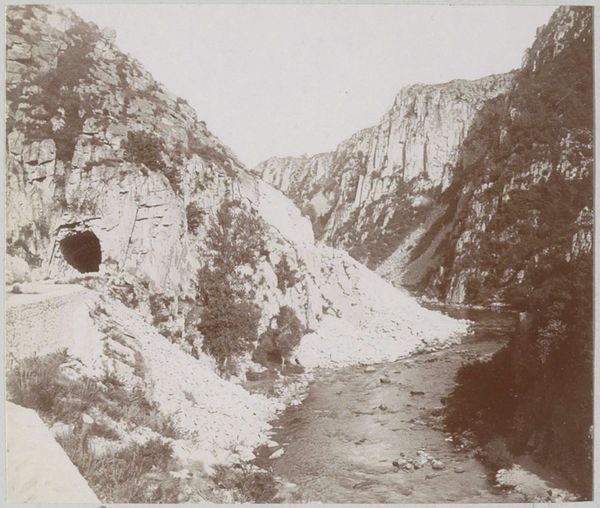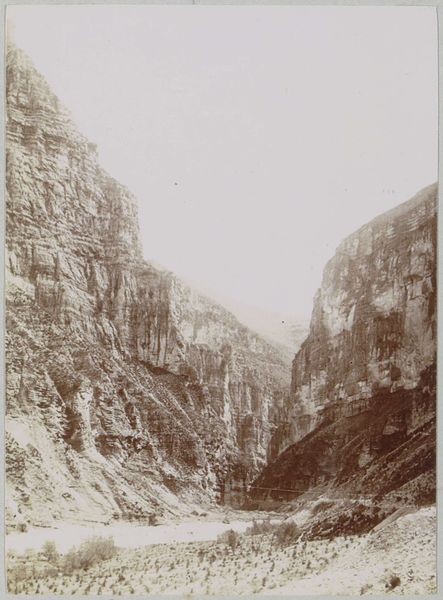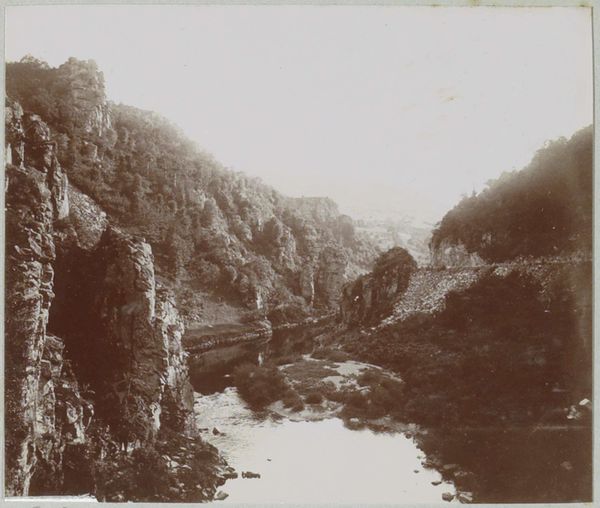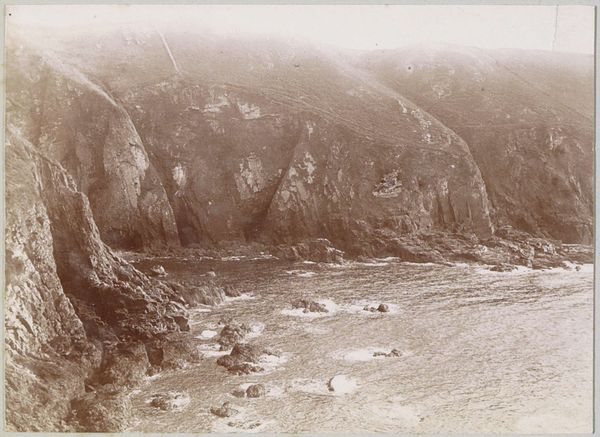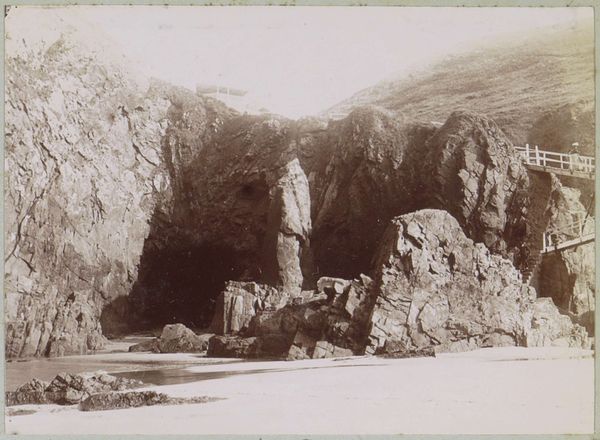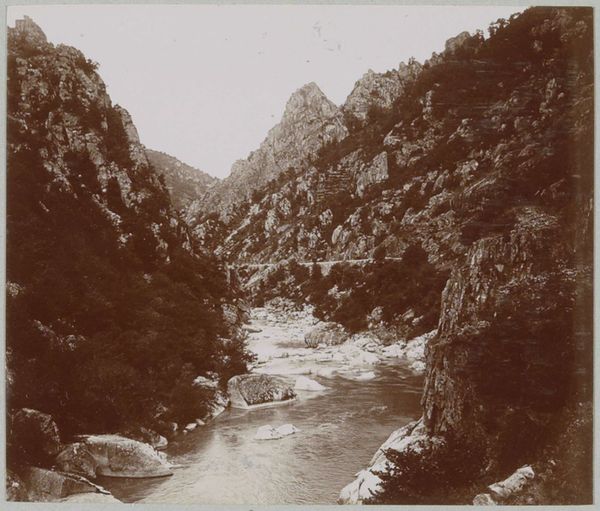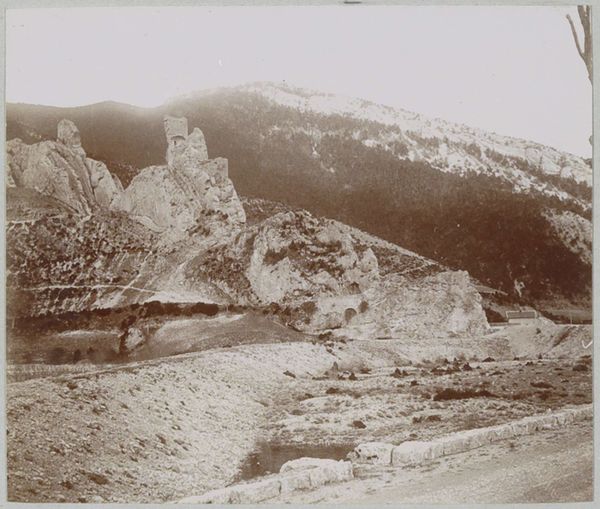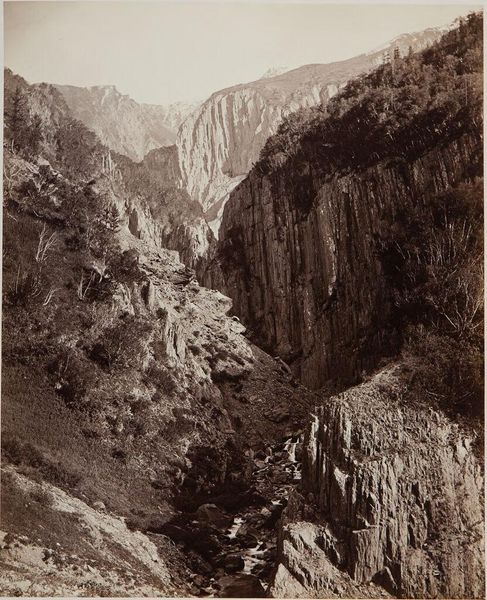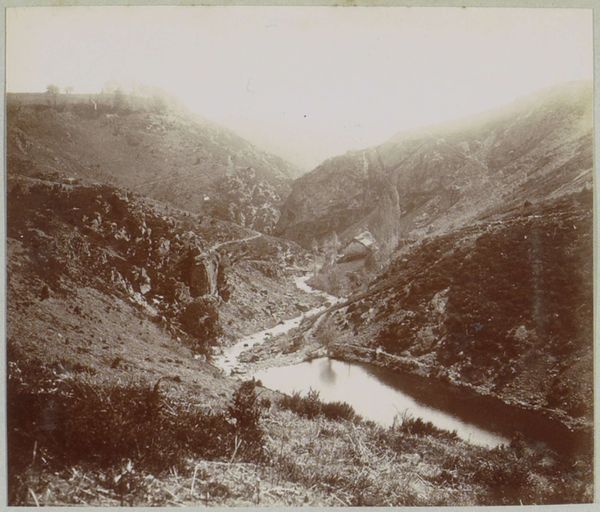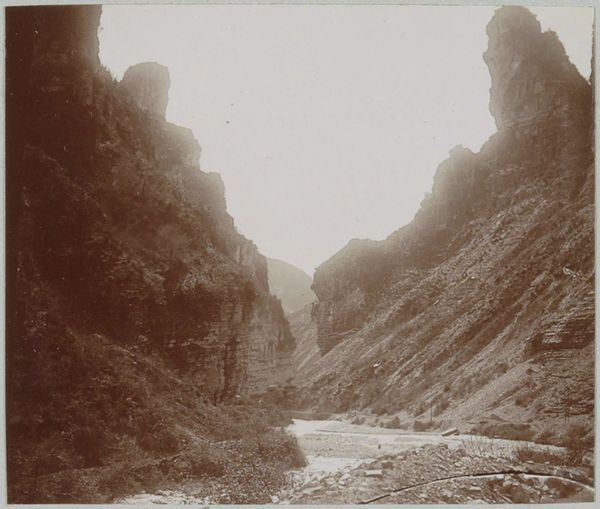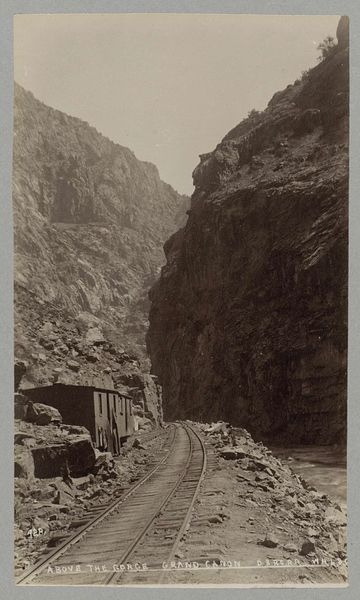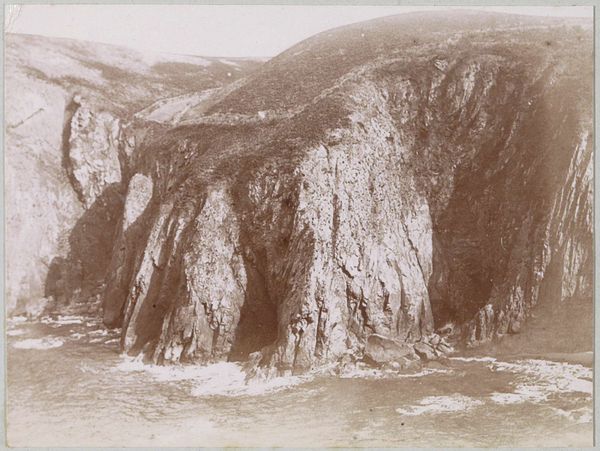
photography
#
pictorialism
#
landscape
#
photography
#
realism
Dimensions: height 126 mm, width 51 mm
Copyright: Rijks Museum: Open Domain
Curator: This photogravure, "Kloof, vermoedelijk bij L'Escarène," was captured in 1903 by Delizy. The title translates to "Gorge, probably near L'Escarène". Editor: Immediately, I'm struck by its imposing verticality, the way the towering cliffs compress the stream below. The monochromatic sepia tone really adds to that sense of a timeless, almost otherworldly place. Curator: What is truly compelling about this photograph, besides its aesthetic appeal, is Delizy’s mastery of the photogravure technique. This labor-intensive process, involving etching and printing from a copper plate, allowed for the reproduction of incredibly rich tonal ranges and details that evoke hand-made prints rather than mass-produced images. It's a testament to the artistry involved in early photography. Editor: That artisanal quality definitely shines through. Considering its age, the social context adds another layer. We’re at the dawn of the mass tourism era; pictures like this fuel romantic ideas about sublime, untouched natural landscapes. Yet, notice the small man-made bridge visible far upstream. There are already indications that we were beginning to impact even seemingly untouched spaces, though the romantic pictorial style minimizes these changes.. Curator: Precisely! Also consider, as this work appears at the Rijksmuseum, that institutions validate artistic productions. Photography at that time existed on the margin, because of this piece's existence in an art gallery elevates its significance, making it palatable as an artwork that’s not so much about pure landscape but also about human interventions within landscape and about a redefinition of artistic expression through a mechanical means of image production. Editor: A vital point! Looking closer, I observe the rough-hewn stone wall built along the gorge. Its presence serves both a practical and symbolic purpose—to navigate the terrain but also to lay claim to it. Who built this, and for what reasons? Curator: Delizy's artistry lies in obscuring the reality of industrial advancement with the pictorial language of the era. As Historian, how do you reckon Delizy balances photographic realism with painterly ideals to communicate not just a scene, but a feeling? Editor: Through his attention to the materials of photographic production as you mention. He creates the effect that time is stilled but progress happens everywhere, one click away from becoming part of history. I come away thinking the image asks the viewer what must remain sacred or untouched in an era when almost everything is being transformed.
Comments
No comments
Be the first to comment and join the conversation on the ultimate creative platform.
